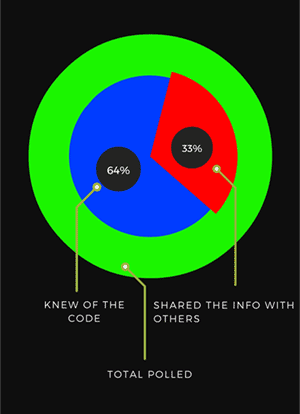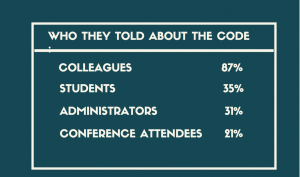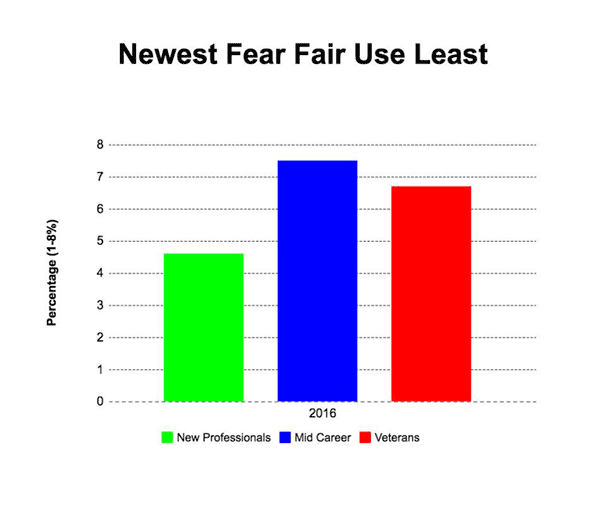CAA News Today
New in caa.reviews
posted by CAA — August 05, 2016
Abigail McEwan reviews Alejandro Anreus’s Luis Cruz Azaceta, the tenth volume in the A Ver: Revisioning Art History series, which publishes monographs on Latino artists. Focusing on the career of Luis Cruz Azaceta, a Cuban American artist, the book interweaves “biographical and diasporic coordinates within a richly informed social history of his work.” Read the full review at caa.reviews.
Stella Ramage visits the Fiona Pardington: A Beautiful Hesitation exhibition. Held at three venues in New Zealand, the show is a “survey of thirty years’ work by one of New Zealand’s most prolific photographers,” showcasing Fiona Pardington’s “unashamed, lyrical romanticism” and “persistent preoccupations with mortality and memory.” Read the full review at caa.reviews.
Rosemary Hawker examines The Photograph and Australia, an exhibition that “brings together over five hundred photographs from major Australian collections of historical and contemporary works.” The Art Gallery of New South Wales Curator Judy Annear “helps us find multiple ways to think about the photographic record of Australia and what Australian photography might be.” Read the full review at caa.reviews.
Caa.reviews publishes over 150 reviews each year. Founded in 1998, the site publishes timely scholarly and critical reviews of studies and projects in all areas and periods of art history, visual studies, and the fine arts, providing peer review for the disciplines served by the College Art Association. Publications and projects reviewed include books, articles, exhibitions, conferences, digital scholarship, and other works as appropriate. Read more reviews at caa.reviews.
A Fair Use Code Changes Practice in the Visual Arts: The Numbers
posted by CAA — August 04, 2016
How much difference has the release of the College Art Association’s Code of Best Practices in Fair Use for the Visual Arts made so far? Even a few months after the release in February 2015, there was significant change in the field’s practice.
A survey of more than two thousand members of the College Art Association, starting seven months after the launch of the Code and winding up in January 2016, was analyzed by American University faculty and graduate students. Here’s what we know:
By and large, and as expected, patterns documented in a 2013 survey remained in place in the few months after the CAA Code was launched. The great majority of visual arts professionals still default to permissions, even though they have some experience of fair use when permissions processes fail. That choice is often costly. About a third of the respondents continue to report problems with avoiding projects, abandoning existing projects, and serious delays of more than three months, because of permissions.
But as well, we saw some real changes.
- The Code spurred a significant group of people to try fair use for the first time. Some 11% of those who have employed fair use did so for the first time after the Code came out.
- The Code spurred institutions to revise their policies. More than half—57%–of respondents who reported some institutional policy change said it had happened after the Code was released.
- Editors reported the largest amount of change, of any occupational group. This reflects the fact that several institutions publicly announced a change in policy, including the College Art Association. CAA’s author agreement now encourages a default to fair use where in line with the Code.
These changes, which occurred after only months of experience with the Code, happened because of widespread and networked knowledge.
o Two-thirds of respondents said they had heard of the Code before they took the survey.

o Most heard from multiple sources, but CAA was the most common source, whether through the conference, a newsletter or the website.
o A third of those who had heard about it had shared the news with someone else—a gesture that shows trust in the information, and confidence that it will be useful.

o Mid-career and veteran members of the field were much more likely to have heard about it than the newer entrants.
This is only the beginning, though. There’s still a lot to do.
- More than a fifth of respondents said they simply did not know whether fair use was valuable or not in their work. For a tool so fundamental to the functioning of the field, that is an alarming information gap.
- Only half of those who had heard about the Code went on to use it in the months after its release.
The survey results provide some next steps:
- Knowledge matters. The more confident and grounded respondents are in their understanding of fair use, the more likely they are to use it. So sharing your knowledge about the Code is crucial.
- Veteran leadership matters. Newer entrants to the field are less likely to have heard about the Code or to have experience with fair use.
- It’s worthwhile investing in the newest entrants. Although they were less familiar with the Code or fair use, they were the most likely to recognize that fair use is valuable to their work. They also are the most likely, they say, to change behavior with greater confidence in their knowledge.
- Institutions are really important in changing practices–to set terms, spread the word, and by publicly announcing their decisions to give confidence to others.
- Higher education is particularly important, especially for those, like artists, who may not be consistently working within institutions as they develop their careers. Universities, colleges, and art schools can educate the next generation about the new normal.

For more information about the Code, including informational videos, infographics, and frequently asked questions, visit the Fair Use page on the CAA website.
Originally published by the Center for Media and Social Impact in the School of Communication at American University.
News from the Art and Academic Worlds
posted by Christopher Howard — August 03, 2016
Each week CAA News publishes summaries of eight articles, published around the web, that CAA members may find interesting and useful in their professional and creative lives.
A Prized Stettheimer Painting, Sold under the Radar by a University
When Fisk University, the historically black school in Nashville, tried to sell two paintings several years ago from its storied Alfred Stieglitz art collection, a firestorm erupted. A drawn-out legal challenge ended in a compromise that allowed the school to share its collection with Crystal Bridges. What was not revealed at the time—and has only recently come to light—is that before the agreement was completed, the university’s president quietly sold two other paintings owned by Fisk. (Read more from the New York Times.)
Artiquette: Ten Mistakes Not to Make While Promoting Your Art
How do you make it in the art world? It’s a magical formula that involves, talent, drive, grit, and the ability to promote oneself. Unfortunately, talking up your own artwork, projects, and ideas can be a delicate balancing act. To help you walk that line, Artnet News has rounded up a list of mistakes to avoid in self-promotion. (Read more from Artnet News.)
Sharon Louden: Consultants, Careers, and Community
I frequently get pitches from art consultants who offer help securing exhibitions, grants, and publicity. I often wonder if their services are helpful, or whether the consultants are taking advantage of vulnerable underrecognized artists, so I contacted my friend and colleague Sharon Louden, a successful artist who gives professional-development webinars and lectures about sustaining a creative life. (Read more from Two Coats of Paint.)
Talking Art and Tech in Bay Area Living Rooms
The all-purpose status of the living room made it the ideal site for a series of events initiated two years ago by the artists Liat Berdugo and Elia Vargas. The duo used the living rooms of Bay Area artists and cultural producers to host monthly public conversations—on new media, digital art, creative works in progress, and artistic practices—that were attended by friends and strangers. (Read more from Rhizome.)
The Syllabus as a Contract
Whatever the professor’s intention, when students see a due date on the syllabus, they often assume that the assignment is due via online submission by midnight on that date. Technology has forced professors to be extremely specific on these details or else face inevitable challenges from students. It’s precisely when such challenges arise that professors and students look to the syllabus as a contract. (Read more from the Chronicle of Higher Education.)
Are Acrylics as Durable as Oils?
If oil paint had to sell itself to the marketplace as a new medium, it would have a difficult time—especially because its list of problems would include yellowing, cracking, wrinkling, flaking, embrittlement, hydrolysis, fatty-acid crystallization, and protuberances and delamination caused by metallic soaps. This is not to say acrylics do not have their own challenges as well! (Read more from Just Paint.)
Why Books Are the Perfect Way to Spread Art to the Masses
Art is expensive, often ludicrously so. For many art lovers, books are the most viable means of supporting artists and beginning an art collection of their own. Carolyn Schoerner is the mind behind Books For All Press, a nonprofit publisher working with artists living with mental illness and developmental disabilities. (Read more from the Huffington Post.)
For Scholarly Communications, Double-Dipping Is Double the Fun
Since commerce is inherently evil—and commerce connected to the academy even more so—it must be an exceedingly dastardly deed for a publisher to engage in double-dipping, in which the same content finds one audience in institutions and another among the authors who create it, sometimes in violation of an author’s contract. So how does double-dipping work? (Read more from the Scholarly Kitchen.)
AVIS Is CAA’s Featured Member Partner For August
posted by CAA — August 02, 2016
 Did you know that as a CAA member, you can save up to 25% off Avis base rates when making a reservation with Avis Worldwide Discount?
Did you know that as a CAA member, you can save up to 25% off Avis base rates when making a reservation with Avis Worldwide Discount?
As you plan your get away for the last month of summer, make sure you get the most out of your car rental options! Special discounts are available on a wide selection of vehicles from eco-friendly and fuel-efficient compacts and hybrids to stylish premium and luxury sedans.
The Avis Budget Group, Inc. is a leading global provider of vehicle rental services, both through its Avis and Budget brands, which have more than 11,000 rental locations in approximately 180 countries around the world.
Visit the special Avis page for CAA members to learn more about your benefits. And don’t miss the Avis discounts offered during the Annual Conference!
Members of CAA’s new Committee on Design
posted by CAA — August 01, 2016
In 2015 CAA established a Task Force on Design charged with suggesting positions the organization might adopt toward design, design studies, designers, design educators, historians, and theorists. In early 2016 the CAA Board of Directors announced it would replace the Task Force with a new Committee on Design to be among CAA’s ten standing Professional Interests, Practices, and Standards Committees.
Jim Hopfensperger, CAA’s VP for Committees, is pleased to announce the following members who will constitute the inaugural Committee on Design:
Audrey Bennett, Rensselaer Polytechnic Institute
Holly Cline, Chair, Radford University
Federico Freschi, University of Johannesburg
Chris Garvin, University of Georgia
Matthew Gaynor, Kansas State University
Elizabeth Guffey, State University of New York at Purchase
David Howarth, Zayed University, Dubai
Zach Kaiser, Michigan State University
Sarah Lawrence, Parsons School of Design
Yelena McLane, Florida State University
Victoria Pass, Salisbury University
David Raizman, Drexel University
Bess Williamson, School of the Art Institute of Chicago
Dan Wong, New York City College of Technology, CUNY
The Committee on Design will promote and advance issues in design practice, design history/theory/criticism, and design education through advocacy, engagement, and a commitment to the diversity of practices and practitioners. The committee will further support discussion and action in these areas to stimulate intellectual curiosity and advance skills that enrich the individual and society.
CAA is grateful to these dedicated members who will work to advance the interests of all design disciplines through their service to CAA.
caa.reviews Publishes 2015 Dissertation List
posted by CAA — August 01, 2016
 caa.reviews has published the authors and titles of doctoral dissertations in art history and visual studies—both completed and in progress—from American and Canadian institutions for calendar year 2015. You may browse by listing date or by subject matter. Each entry identifies the student’s name, dissertation title, school, and advisor. Once a year, each institution granting the PhD in art history and/or visual studies submits dissertation titles to CAA for publication.
caa.reviews has published the authors and titles of doctoral dissertations in art history and visual studies—both completed and in progress—from American and Canadian institutions for calendar year 2015. You may browse by listing date or by subject matter. Each entry identifies the student’s name, dissertation title, school, and advisor. Once a year, each institution granting the PhD in art history and/or visual studies submits dissertation titles to CAA for publication.


